-
Posts
923 -
Joined
-
Last visited
Content Type
Profiles
Forums
Downloads
Posts posted by 007 RED
-
-
9 minutes ago, lopburi3 said:
Make sure they know you are using income method to extend if you continue to keep 800k in bank account - had issue this year as have always used income but had 800k in account at last extension (in case of any transfer issues) and took the 800k lower in less than 3 months after extension - so this year immigration believed I had failed to maintain required amount. Seems they do not have any indication of which method you used without reviewing last years paperwork. All was well once that checked. But have to mention each year using income as once they see the 800k they believe that is to be used.
Edit: key to knowing they using income at CW seems to be officer underlines each monthly transfer on bank statement for reviewing officers check.
Thanks for your advice/observations.
I've been thinking about taking a trip to the Immigration Office and posing the question in the hope of getting the line from the 'horse's mouth'. The only trouble is that what the senior IO indicates now may well be different come September next year.
Interesting point that you made that the Immigration Officer may not have any indication what method I used for my previous P2S. I just looked at my passport (Photo below) and noticed that for the first time for the previous years, there is a notation (which I have highlighted) indicating in Thai that money abroad (according to Google Translate).

-
33 minutes ago, DrJack54 said:
Currently I am doing the opposite at CW.
My recent extension was Nov last year.
I have decided to maintain the 800k in the bank and in parallel start the transfers.
This means I have both options covered if any issue from immigration office.
In your situation I would do the same just to cover all bases, especially as you mentioned that you have the 800k already here in Thailand.
As you have suggested, I'm still maintaining the monthly international transfers, but it would be nice to know if that is really necessary.
I appreciate that Immigration most likely wont agree with my logic, but my thinking is:-
With the 65K international transfer method, they (Immigration) are looking to see that you have made the correct international transfers for each of the previous 12 months. Not what you might transfer in the forthcoming 12 months. Provided you have the necessary documented evidence in your bank statement of your past transfers, they (Immigration) will renew your Permission to Stay for the forthcoming 12 months.
So, if I have 800K (plus) deposited in a savings account prior to the date that the latest Permission to Stay was granted, should that not be acceptable for the next renewal?
Hence the reason for my post, to see what any other AN members have experienced when changing from monthly international transfers to 800K in the bank.
-
 1
1
-
 1
1
-
-
I’m sure that this has been raised before, but unfortunately my searches via Google and AN have only revealed the procedure the other way around e.g. changing from 800K in bank to 65K monthly international funds transfer.
Background: For the past 13 years I’ve been on annual renewal of Permission to Stay based upon my original Non-O (Retirement) visa. I have been using the 65K per month international transfer into a Thai Bank method since the British Embassy stopped issuing its letter to Immigration. Next renewal is due in September 2024.
Considering the possibility of the Revenue Department taxing my incoming internationally transferred funds next year, I’ve decided to change my annual renewal method to 800K in the bank and thereby lessen the amount that I need to transfer into Thailand each month to hopefully reduce my tax burden. I already have 800K (plus) in a savings account which has been there for several years, so there should be no problem with ‘seasoning’.
My question is: Do I need to continue making 65K monthly international transfers into my Thai bank account until my next renewal is due, or can I reduce this amount now and just rely upon 800K (plus) when I do my next renewal?
I appreciate that each Immigration Office (and possibly individual officers) will have its own interpretation of how such a change can be achieved, but I would welcome any guidance/experience from AN members who have recently gone through this transition.
-
 1
1
-
-
- Popular Post
- Popular Post
@4myr May I firstly wish you the very best of luck with your endeavours to get approval to become a Small Power Producer (SPP) and to get paid by your local PEA for feeding back your surplus power to them. From what other members of the forum who have tried to get approval have enlightened us, it is no mean task.
OK, my reason for posting the comments below is because of your aspiration that feeding back 10 units/day, at a payback rate of 2.2 THB, will give you a return of 70,000 THB over 10 years.
I’m sorry to say it, but if you do get approval to become a SPP, I don’t think that you are going to get anywhere near the return of 70,000 THB within the 10 years that you are hoping for. I think that you will be extremely lucky if you get about half that amount assuming that the feedback rate (2.2 THB/unit) remains the same.
Why only half your anticipated figure?
At present with a normal meter the monthly 'Service Charge' (sometimes referred to as a Standing or Connection charge) which is shown on your monthly bill can be 8.19 THB/month, or 24.62 THB/month, depending upon how many units you purchase a month from the PEA.
What you may not be aware of is that the moment you get SPP approval, and your local PEA installs your wonderful new feedback meter, they (the PEA) will up your monthly ‘Service Charge’ considerably .
I recall that another member, quite some time ago, who went down the same route as you was horrified when he discovered the new ‘Service Charge’ for feeding his surplus back to his local PEA. Unfortunately, I can’t remember the figure that he quoted, and I can’t find any reference to this particular charge on any of the PEA websites.
But as an example:
If the ‘Service Charge’ for a feedback meter is the same as the charge for Time Of Use (TOU) meter, which is currently 312 THB/month, then at the current rate of 2.2 THB/unit feedback, you will need to feedback approximately 141 units each month, just to pay for the new ‘Service Charge’.
Hence, based upon your anticipated feedback of 10 units/day for a 30 day month, this will give a feedback of 300 units/month. If you need to produce at least 141 units/month to cover the cost of the ‘Service Charge’, you will in fact only be getting 159 units, which at 2.2 THB will only give you a payback of 350 THB/month from your local PEA, which is unfortunately half of what you are expecting.
I would seriously recommend that you double check with your PEA how much the ‘Service Charge’ will be if you get SPP approval. I hope for your sake that I'm wrong.
I appreciate from your comments above that you have already submitted forms for approval to your local PEA, but please be mindful that giving to much information to your them will tip them off that you may well be running an unapproved DIY solar system, and this could lead to them making an unannounced visit to monitor your meter (spinning backwards). So be cautious.
As I said at the beginning, best of luck with your project.
-
 4
4
-
Looking back at this thread, I see that a couple of members have suggested that the airline check-in staff may well have ‘tipped off’ immigration.
Personally, I very much doubt it as the check-in staff neither have the time to sift through the passport looking at each visa stamp, or the training to be able to identify if the passenger is on overstay.
That said, when checking in an international passenger the airline’s computer system will advise the check-in staff if a visa is required by the passenger for their destination country and the check-in staff must check that the passenger has the necessary visa. Failure to ensure that the passenger has the necessary visa will result in the passenger being refused entry by the destination country and the airline being fined and having to bear the cost of returning the passenger to their original point of departure.
So how did immigration know that the individual was on overstay?
When the international passenger checked-in, his/her biographical details (Name; DoB; Passport No; etc) will have been entered into the airlines computer system. The airlines computer system automatically feeds the passenger’s biographical data into the Advance Passenger Information System (APIS).
The APIS sends the international passenger’s biographical data to the destination country where various agencies such as police and immigration will determine if the passenger should be allowed to travel to their country. The APIS will subsequently send the airline a code indicating that the passenger can board the flight or a code which tells the airline not to board the passenger. The system does not give the airline a reason for a do not board instruction.
As well as sending the international passenger’s biographical data to the destination country, the APIS also send the passengers biographical data to the departing country’s police/immigration etc so that they can check if the person is wanted for any reason.
I suspect that some bright ‘student’ has recently written a simple query programme that allows immigration to check the visa type and issue date and determine if that the passenger is on overstay. It is possible that some form of alert is sent to the airport immigration office.
A quick look at the CCTV of the airline's check-in counters and route to the departure entrance will easily identify the individual who will be stopped prior to getting to immigration departure desk.
At present the reports indicate that this has only happened at Phuket, I suspect, however, that if this is successful as it has been in a couple of reported instances immigration may well introduce this facility at other international departure airports. Watch this space. So overstayers may well face being picked up at the airport prior to getting anywhere near to immigration and paying their fine in the future.
-
 2
2
-
-
11 hours ago, MangoKorat said:
One website I looked at states that 24 panels rated at 415w will produce 9.96kw - an easy enough calculation. Real world there will be some loss and those figures are optimal right?
Your assumption that in the real world there will be some loss is correct. In fact, the losses can be as high as 25%. So this is something that you need to bear in mind when doing your calculation with respect to the number of panels that you need.
My system is small compared to what you are considering, but it can illustrate real world loss.
My system comprises 4 x 415W monocrystalline half cut panels mounted on my carport roof, which is inclined at approximately 15o and facing due South, which in theory is an ideal installation that should be capable of producing 1.66kW.
Below is a graph taken from my solar system monitoring facility yesterday.

As you will see at 12:20pm the system was producing a max of 1.33kW. At that point in time, it was reasonably sunny, so the sunlight should hitting the panels almost perpendicular. That said 1.33kW which is approximately 20% below what the panels in theory should be capable of producing.
FYI… The sudden drop in output was cause by horrible grey fluffy stuff floating by. The big drop in output around 3pm was caused by heavy rain/thunderstorm which continued to around 6pm.
So what causes this loss?
All solar panels are rated under laboratory conditions. Basically, this is with a constant known light source which is directed perpendicular to the photovoltaic cell, at a constant ambient temperature of 25o C.
Firstly, this means that if the sunlight is at an angle less/more than perpendicular to the solar panel there is going to be loss in output. This can be seen from my graph above as the sun rises to its highest point around noon.
Secondly, the biggest culprit is going to be heat. As you are aware the average ambient daytime temperature here in Thailand is around 32o C. Hence for every degree above the laboratory test temperature of 25o C the panel will lose a given percentage of its efficiency. The panel spec provided by the manufacturer/supplier will indicate % efficiency loss per degree above 25o C.
Although the average daytime ambient temperature is around 32o C, the panels will in fact get considerably hotter due to heat radiation from the sun. I appreciate its not the most scientific illustration, but the photo below shows the temperature of my panels at noon on a good sunny day. They were hot to say the least.
Hence, from the above photo it will be seen that the panels at that point in time were 38o C above the laboratory test condition, which would results in 38 x % decrease in the panel’s efficiency, which would not be insignificant.
Thirdly, albeit a minor one, dust, dirt, bird droppings, leaves and clouds etc will also contribute to a loss in the panel’s efficiency. Below is a photo of the dust/dirt on my panels. In fairness, I live in an area where there are a number of factories who tend to emit pollution, so cleaning on a regular basis helps maintain best possible performance.

So, I would suggest that using the illustration which you used, e.g., 24 panels at 415W = 9.96kW is more than likely to only produce around 7.47kW on a good sunny day at noon and you may need to consider increasing the number of panels or going for large output panels e.g. 450W. Hence, 24 panels at 450W will give a theoretical output of almost 13kW, which assuming a 25% loss will give you a more realistic output of 9.7kW.
I hope this helps, and good luck with your proposed project
-
 1
1
-
-
- Popular Post
All credit to the motorcyclist travelling in both directions, in the short video clip... They are all wearing what appears to be very decent full face helmets and protective clothing. Unfortunately, this is something that the vast majority of motorcyclists, and their passengers, here in Thailand lack, which all to often results in fatal injuries when involved even in a low speed crash.
-
 2
2
-
 1
1
-
4 hours ago, webfact said:
Air Force Calls Up Reservists, THAI Pilots In Starting Evacuation Flights Tonight
by TNR StaffThai air force’s Airbus A340 taking off and flying high. Photo: Thai Rath
THE THAI air force has summoned reservists with experience in flying Airbus A340 aircraft as well as roped in Thai Airways International pilots with similar experience in preparing to launch flights to evacuate Thais from Israel starting tonight (Oct. 14)
Well there's at least one ex-Thai Airways pilot who has lots of experience flying this particular model of A340 between BKK - MUC - BKK on a regular basis who should be first in line to volunteer for this mission.
-
 1
1
-
-
46 minutes ago, khunjeff said:
They have one million sim cards to hand out "to all foreign visitors landing in Thailand" over a period of nearly six months. Are they aware that well over one million foreign visitors land in the country every month?
Edit: they actually said the distribution will go on until 2027 - so I think they'll need at least a hundred million extra cards...
Simple.... They (TAT) forgot to mention one very important thing.... In order to get their 'free' SIM card the tourist will have to hand over their passport, sign copies of their biographical page and visa, list where they will be staying (modified TM47) and then provide details of their bank account so that AIS can automatically charge them for any excess calls/data used.
So who in the right mind will accept this so called free handout? Hence the sceptically low numbers of SIMS they have.
What's that old saying? If I remember correctly it goes something like "Nothing in this world is free".
-
 1
1
-
-
3 minutes ago, TimeMachine said:
From what I read people are just hooking up and letting the meter spin backwards. Eventually a smart meter is put in when the readers of the meters Sus onto things.
If you read the OP's posts, you will see the he spends considerable time away from home every year.
If it was a simple grid tied system (like mine) and he forgot to activate the No Export facility before leaving home, the next time the meter reader came he/she would see the disc merrily spinning backwards, and most likely the numbers would be in negative region, which most certainly would be picked up back at the office.
That would prompt a visit by a senior PEA official to confirm the meter was spinning backwards. If the OP was not at home when the official called, the most likely result will be power disconnection until the OP makes contact with the PEA. The PEA will then most likely instal an electronic meter which prevents backwards reading. They also have the option of taking things further and demand that the system is disconnected and/or impose a fine on the OP to the value of the revenue which they have lost plus interest.
Hence the reason why he is considering having an approved system installed.
-
 1
1
-
-
@gejohesch great that you are considering solar.
I note from your comments that you are considering a system that will enable you to feed any surplus power back to the grid and get paid, albeit a pittance, for the privilege of giving your local PEA your surplus power.
In this case, it is most definitely not a DIY project. If you wish to feedback surplus power into the grid you will need what is called a Very Small Power Producer (VSPP) Licence, which is issued by the Energy Regulation Commission (ERC) and allows for up to 10kWp feed-in.
ERC sets the rule/regulations concerning VSPP Licences and these are implemented locally by your MEA/PEA.
I have attached, for your information, a copy of the rules/regulations, which you will find very good bedtime reading if you suffer from insomnia.
The first part of the document mainly covers the contractual agreements between the potential supplier (you) and the MEA/PEA . The interesting stuff starts at Annex 5 (page 47) which specifically covers the ‘Specification of Materials, Equipment and Solar Rooftop Installation’. Annex 7 (page 87) covers the requirements of the installer e.g., registration, qualifications, duties etc.
You will see from Annex 5 that they have specifications covering just about everything in the system, from the solar panels, the inverters, the wiring, and the conduit. They even require that a licenced civil engineer certifies that the roof structure can take the weight of the proposed solar array.
The installer is required to submit a mountain of paperwork e.g., copies of all manufacturer’s certificates to the MEA/PEA when they the apply for a VSPP licence for you.
After reading the above mentions rules/regulations, you will quickly realise the reason why having the system installed by an approved installer can be very expensive.
FYI…. I have also attached the latest PEA Inverter Approved list. This list the makes and models of inverters that have been tested and meet the regulation requirements. For an approved solar system, you can only use an inverter that is on the list.
In one of your earlier posts, you asked if you purchased panels, inverter etc to keep the costs down, would an installer instal them? I think the simple answer is going to be no.
For one moment put yourself in the installers position. In a year you order a fair quantity of panels and inverters from various suppliers. No doubt because of quantity, you will get a reasonable discount on the normal price, so this will add to your profit. Also, what would happen if the expensive inverter which you (customer) purchased failed, or produced magic smoke, when the system was turned on. Who would be responsible for a replacement?
FYI.... You mentioned the Feed-in rate = 2.2 THB/unit. Please bear in mind that the so called monthly connection charge for a dual reading meter is very substantial. Sorry, I can't remember the exact figure, but I think you may get a shock as to the number of units that you will need to feed-into the grid each month just to cover this charge on your bill.
I hope this has been useful in your learning curve. Best of luck with your proposed project and please keep us updated on developments.
20130918_giz_translation_solar_rooftop.pdf 2023-09-26 Inverter List Updated.pdf
-
 1
1
-
 1
1
-
-
2 hours ago, narkeddiver said:
That is the same material that I’m looking at using - it seems like replacing the lights is a good idea, I’ll see f I an get my missus to find out who our local SCB bod is
I had a look back at my records for the insulation of the roof. I found the SCG Home Facilities on the web at https://www.scghome.com/customer-service
The site is in Thai, but if you are using Google it will translate for you. If you click on the 'Home Products' facility on the top menu bar it will take you to all the services that they offer. On that page scroll down to the 'Thermal Insulation Installation' box and you will find all the details there including details of contact there contractor.
I found the company, and their contractor, very good.
Hope that helps.
-
 1
1
-
 1
1
-
-
- Popular Post
- Popular Post
25 minutes ago, isaanistical said:(should have said it's android). That occurred to me. dtac installed its app as soon as I inserted the sim, so perhaps it could be. But why now and, more significantly, how do I get rid of it? I have already disabled alerts in Settings (>advanced settings >wireless emergency alerts) but it still appears on the Apps list and shows no means of turning off permissions.
I have a Samsung S22 Ultra, and it has a facility to both send and receive emergency messages. My service provider is AIS and my SIM is about 15 years old.
As you mentioned in your original post, the 'app' does not appear under the Apps setting.
Go to your Settings (little gear clog), and then scroll down until you come to a feature entitled 'Safety and Emergency'. If you click on this it will take you to a new page which lists facilities which can be activated if you so wish, such as:
Medical Info
Emergency contacts
Emergency SOS
Emergency sharing
Earthquake alerts
Unknown tracker alerts
Silent notification when driving
Emergency location service
Wireless emergency alerts
You will find that by clicking on each of the above mentioned topics, you can setup what you want to do (turn on/off), who to send an emergency message to etc.
If you have activated any of the above mentioned facilities, you may find that they are also listed under your contact details (My profile).
Personally I think its a nice facility which if I'm in trouble (taken ill), and able to press the power button 5 times, my phone will send an emergency message to my designated contact(s) giving them my location.
So hopefully this is what you are looking for and you can turn on/off any facilities without having to 'brick' your phone.
Good luck.
-
 1
1
-
 3
3
-
6 hours ago, Crossy said:
Nice result ????
The options for "do it differently" have improved over the last few years.
There are a fair number of on/off grid hybrids now that will happily run as grid-tie with no ESS and export excess energy. When the no-reverse meter comes along add an ESS and re-configure the inverter to not export ????
EDIT For interest our 10.6kWP hybrid system with 12kWh ESS will pay for itself after about 5.25 years, 1.7 years to go ????
If we get there without getting an electronic meter I'll be happy, if we do get an electronic meter I'll have to add more storage which would push payback out to around 7.5 years total ????
I think that is certainly something that I may consider. As you are aware, I'm currently using 4 x 415W solar panels on carport roof. If required there is ample space to add a further 8 panels. But then were getting into the realms of parallel connections etc, which is going to be a new learning curve for me. That said, I love a challenge.
Many thanks for your suggestion.
-
- Popular Post
- Popular Post
Recently had the roof of our house insulated with SCG, 6 inch thick fiberglass.

Because of my age, my wife decided that crawling around in the roof space was not a good idea. As a result we got SCG's local contractor to do the work for us.
The contactor did an initial survey and made a couple of recommendations.
Firstly, he advised that it would be necessary to cut the insulation around the couple of lights that protruded up into the roof space. He said this was to ensure that any heat given off by the light bulbs would not cause a problem with the insulation material. He advised that this would reduce, albeit by a small amount, the thermal insulation of matting in the vicinity of the lights.
Secondly, and perhaps more importantly, he advised that the insulation tape which was wrapped around electrical cables in the roof space, which had been 'twist' joined together, were showing their age (age hardening). He said the there was a risk, again albeit small, that if a live wire touched the aluminium outer cover of the insulation material, this could potentially result in fire or someone being electrocuted.
After discussions with the contractor, I decided that the lights which protruded into the roof space would be replaced with flush low power LEDs, thus negating the need to cut the insulation material and reduce its thermal efficiency. I had already replaced all the other incandescent light fittings in the house with LEDs, so this seemed a logical step.
Following the contractors advice, I agreed that he would reinsulate all of the 'twist' joined cables withing the roof space and cover each joint with heat shrink as a double precaution. Obviously this would incur an additional cost.
The installation required 20 rolls of 6 inch x 4 meters of fiberglass matting. It took the contractor (3 men), 3 hours plus to reinsulate all the electrical cable joints and then insulate the roof space.
There was a small charge for the initial survey (250THB), but this was refunded when we made final payment for the work which the contractor carried out.
Had I decided to do the job myself, the cost of the insulation material purchased via HomePro would have been 10,000THB plus delivery. The Contractor charged me 15,000THB, minus the initial survey fee.
I have to say that since the fiberglass insulation has been installed, it seems much cooler in the upstairs rooms at the end of a hot sunny day.
-
 2
2
-
 1
1
-
 1
1
-
- Popular Post
- Popular Post
My small scale Grid Tied Solar system has been running for 2 years, as of today. So, I thought it was time to take stock of what it has achieved.
For those unfamiliar with my system, it basically comprises 4 x 415W half cut monocrystalline solar panels connected in series to a Sofar 2200TL-G3 grid tied inverter. The system is mounted on our carport roof which faces South and is inclined at about 15o, thus ‘catching’ as much sunlight as possible throughout the year.

From historical usage data, my wife and I appeared to be using around 9 units a day. Not a lot when compared to many other forum members. Although we have air conditioners in the living room and the bedroom, these only get used when the humidity gets above 75%, and then only for relatively short periods of time to dry thing out. We prefer to use fans whenever necessary.
When I originally designed the system, I determined that it should produce about 75% of our daily electrical needs so as not to get us into a negative meter reading situation.
The project and was based upon @Crossy original topic
The installation was DIY, so the only costs involved were for the hardware, which amounted to 28,000THB give, or take a few THB.
Prior to activating the system, we were paying our local PEA 4.2THB per unit, this comprised:-
(the cost of units used + connection charge + any FT adjustment + VAT) ÷ number of units used that month.
So, for the purposes of evaluating the ROI I have continued to use 4.2THB/unit as the base cost of the units generated by the system. Obviously, the price per unit has risen over time, so in reality the payback time will in fact be much quicker.
According to the monitoring system, as of this morning, the system has been operational for 730 days, during which time it has generated a grand total of 5,910 units, which at 4.2THB/unit, means that the system has reduced our PEA bills by 24,822THB during the past 2 years.
I anticipate that at the current rate of production, in approximately 3 months’ time the system will have paid for itself, and from then on it should be ‘profit’
 .
.
28,000THB ROI in approximately 2.25 years has turned out to have been a very worthwhile investment, in my opinion.
As an added bonus, the Sofar monitoring facility also advises me that my small scale system has saved 1.8 tons of coal from being used, 4.68 tons of CO2 being emitted and 322 trees having been planted. Don't ask were they got those figures from as I absolutely no idea.
Problems?
No not really. That said, because we live in a semi-industrial area, the panels do tend to get quite dirty and need regular cleaning which is a bit of PITA at my age climbing onto the carport roof.
We know which day the meter reader comes each month, so the system is switched into NO Export Mode the day before he comes, so this has never been a problem. That said, my main worry has always been the PEA turning up unannounced and seeing the meter spinning backwards. This did happen once when one of our neighbours apparently did not pay their bill and the PEA contractor arrived to disconnect their supply. There are 5 meters (including ours) on the same pole outside our house. I heard their pickup stop outside and realised who they were. Fortunately, our washing machine at the time was going ‘hell for leather’ in its spin cycle, so if they had looked at our meter it was more than likely spinning in the right direction. As an added precaution I also turned on our air con in the living room just to be absolutely sure.
Once they had gone, I turned the system into No Export Mode, knowing that they would be back in a few days to reconnect the supply once the neighbour had paid their bill.
Would I do anything different?
Basically, no. I appreciate that the time may well come when our local PEA will come and replace their lovely spinning disc meter with a shiny new electronic one. Obviously this will prevent the system feeding any surplus power back to the grid. When that happens, I will have to consider our options. Do I add a couple of extra panels and stick system permanently into No Export Mode, or do I upgrade to an expensive larger hybrid system with an ESS. Only time will tell.
-
 6
6
-
 1
1
-
 1
1
-
 3
3
-
 1
1
-
- Popular Post
By way of an update on my OP.
I Initially tried to raise the question (“how can I change my email address on 90 day reporting system”) via the Immigration help number and email address. Frankly, they don’t seem to have the faintest clue on what I was trying to achieve.
After several conversation with the help line number, they eventually put me through to someone in the IT department. I explained what I needed, but he wasn’t sure if it could/couldn't be done and he advised me that he would speak to the person who ‘runs’ the system and get back to me. True to his word, a few hours later he called me and said that there is no facility within the 90 day reporting system to enable me or anyone else to change my email address. He suggested, like several AN members, that I create a new ‘account’ with my new email address.
On day 12 prior to the date of needing to submit my 90 day report, I registered a new ‘account’ which was accepted very quickly. I then proceeded to fill in the online form ensuring that all the details matched those which I had used with my previous ‘account’ (I had a screen shot of the previously accepted form), and then submitted it. I received an almost instant email acknowledgement from Immigration (complete with a PDF copy of my submission) indicating that they had received my 90 day report. I checked the details on the PDF, and all appeared to be correct.
2 days after submitting my 90 day report I received an email from immigration. Shock horror!!!!! ????
"Dear 007 RED
Your application for "STAYING LONGER THAN 90 DAYS" has been rejected.
Please contact the nearest Immigration Office in person immediately.
Full Name : 007 RED
Passport No : 12356789
Nationality : GBR:BRITISH"
No explanation as to why my application had been rejected.????
After recovering from the initial shock of the rejection, I noticed that my passport number shown on the rejection email was incorrect. It should have been 123456789. The # 4 was missing. Yet on the application form which I had submitted it showed as being the correct number.
Unfortunately, last October my local Immigration office move from Rhi Khing (which was about 10 minutes’ drive away) to a remote location West of Nakhon Pathom (which is about a 90 minutes’ drive away). So rather than drive all that distance, I decided to push my luck and resubmit my 90 day report application again, ensuring that my passport number was 100% correct. Again, I received an almost instant acknowledgement that my report had been received.
2 days later, I received an email from Immigration confirming that my application for “STAYING LONGER THAN 90 DAYS” has been approved.

So, the upshot being, if you need to change your email address for any reason, for 90 day reporting, just create/register a new ‘account’ using your new email address.
Many thanks to fellow AN members for your advice which proved totally correct.????
I hope that my experience helps others who may find themselves in a similar situation.
-
 1
1
-
 1
1
-
 1
1
-
- Popular Post
5 minutes ago, Fruit Trader said:It's very likely this inverter is exporting which means all energy being produced will be consumed. If this is the case, current variations will be from cloud movements and the constant voltage from the inverters control of power point.
You've 'hit the nail on the head'. My small scale GTI system is normally allowed to export any surplus electricity to the grid. The exception being the day when the meter reader comes, then it's definitely switched into NO EXPORT mode to stop the disc spinning backwards.
-
 3
3
-
3 hours ago, bluejets said:
Your assumption about clouds being the source of the current fluctuations is i
As others have pointed out, your 'assertion' is not correct.
FYI... Yesterday during the time frame illustrated by the graph which I showed above, there were intermittent clouds from late morning through to mid afternoon which blocked the sunlight hitting the panels. As a result, it could be clearly seen that there were a consistent drops in the current produced by the array as the cloud(s) blocked sunlight hitting the panels and a clear return of current produced once the cloud cleared .
As a further example, take a look at the graph below. FYI....On the 3rd August (in my location West of BKK) it was a very overcast day.

On the 3rd, my small scale system only managed to produce a measly 3.79 units all day. You will notice that at approximately 15:11 hrs the system almost 'closed down'. This being as a result of a torrential rain/thunder storm which lasted for several hours.
Using your assertion, the heavy clouds should have had no affect whatsoever on my system's ability to produce electricity and they should have merrily produced power throughout the storm . I wish.
-
OK, my small scale system is not in the big boy's league, but the Sofar 2.2kW GTI does seem to give me feedback as to what my 4 x 415W panels, which are connected in series are producing, as can be seen from the graph below which I downloaded from the monitoring facility a few minutes ago.

Obviously the 'big dips' in the current produced by the array is a result of some 'white/grey fluffy stuff floating overhead'.
-
 2
2
-
-
34 minutes ago, MJCM said:
I checked and I don’t see any possibility to change your email address.
2 suggestions
1- Do you keep your old email address? If so, then you could maybe do a forward to your new email address
2- applying again with the new email address.
Here another thread about it
Thanks for your suggestions. I've read through the link and unfortunately there was no indication that I can change my 90 day email address via my original registration, other that creating a new registration as you suggested.
-
 1
1
-
-
Without going into details as to the reason why, I find myself needing to change the email address which I have used for online 90 day reporting.
Has anyone needed to do this? If so, is it a simple change when doing the next report, or are there likely to be any issues?
Any advice/assistance would be very much appreciated.
-
- Popular Post
- Popular Post
@Crossy... Do it now or suffer the consequences ????

-
 1
1
-
 2
2
-
- Popular Post
What ! no police motorcycle escort, with blue lights flashing and siren screaming, from the airport to her 5 ✳️ hotel. She deserves a refund ????
-
 1
1
-
 3
3



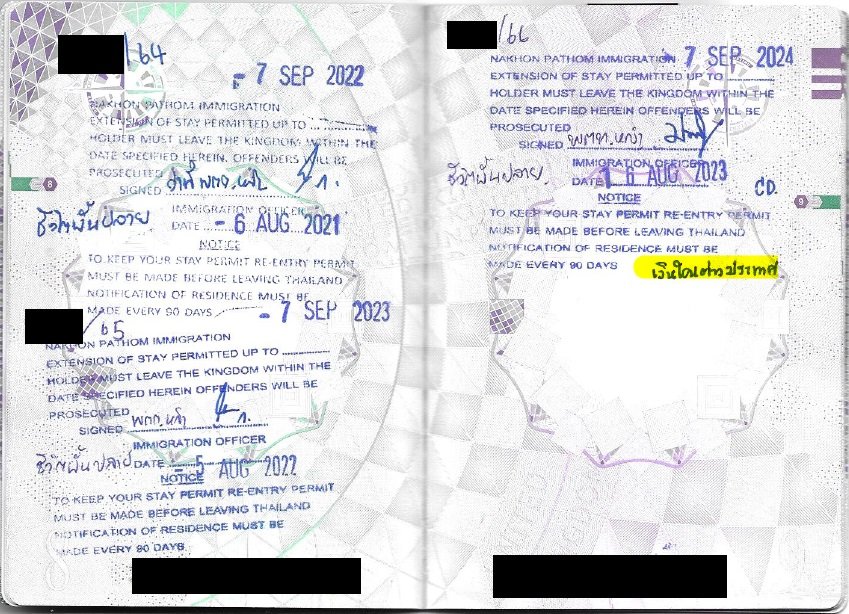
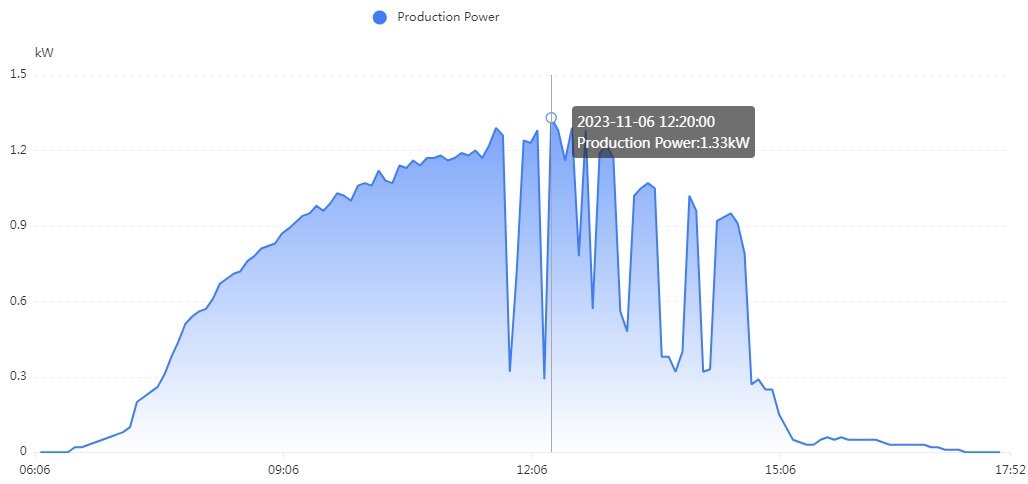
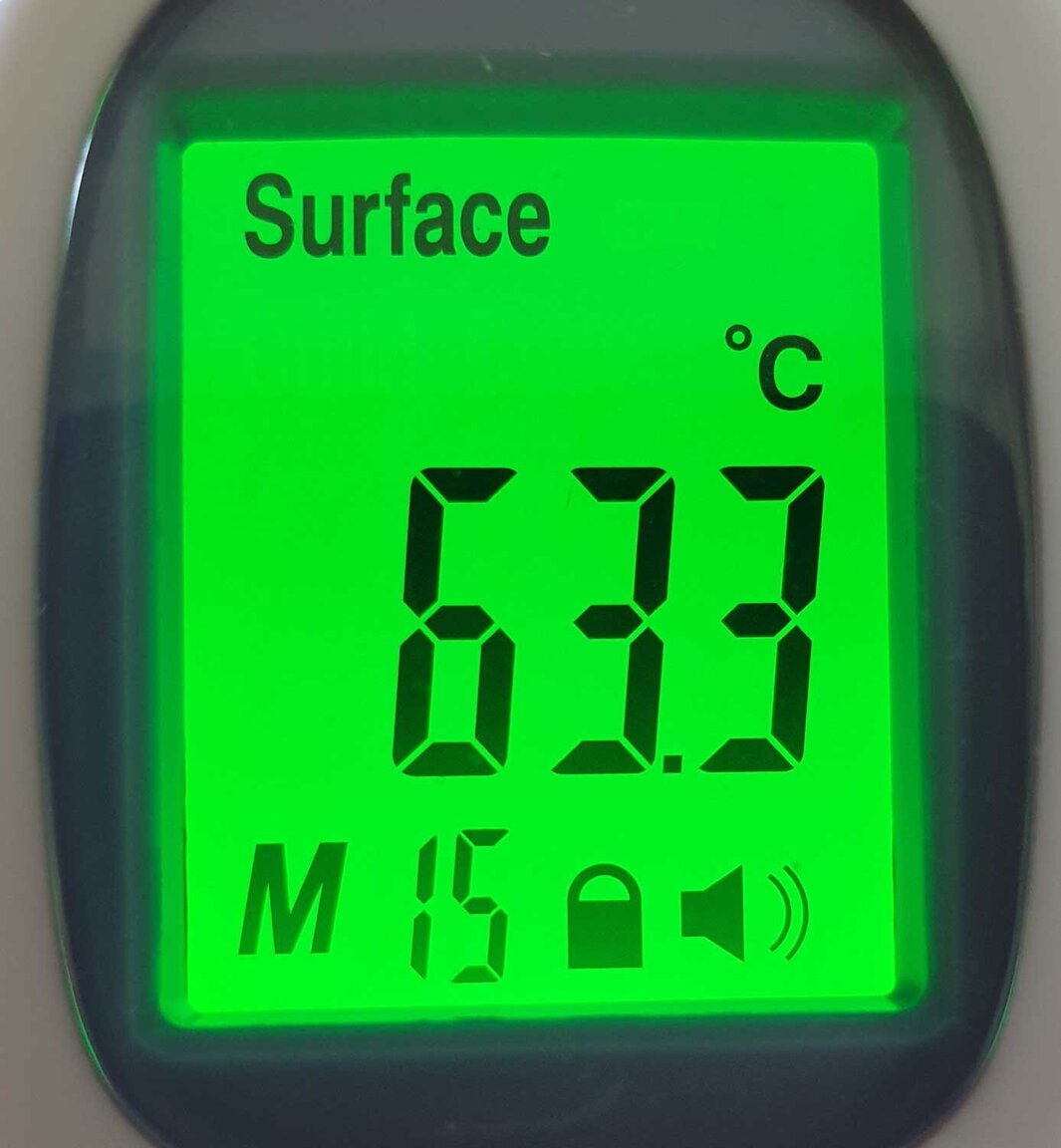
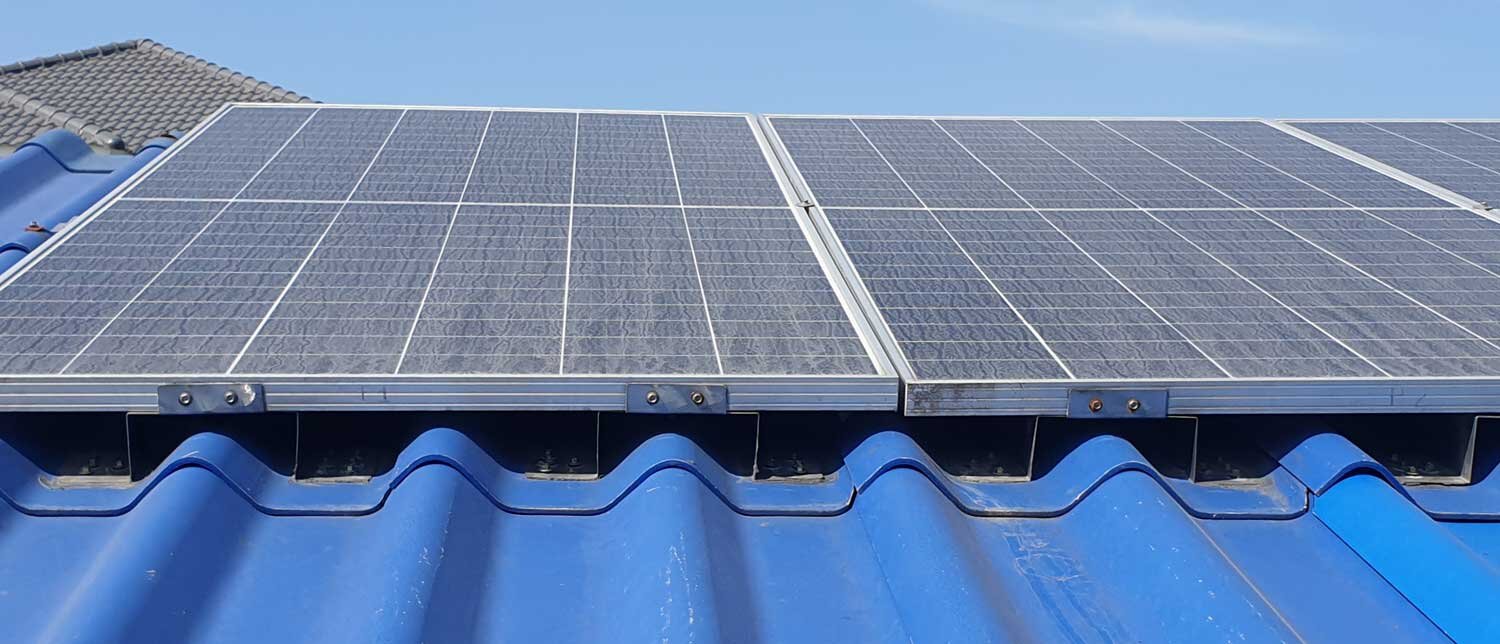

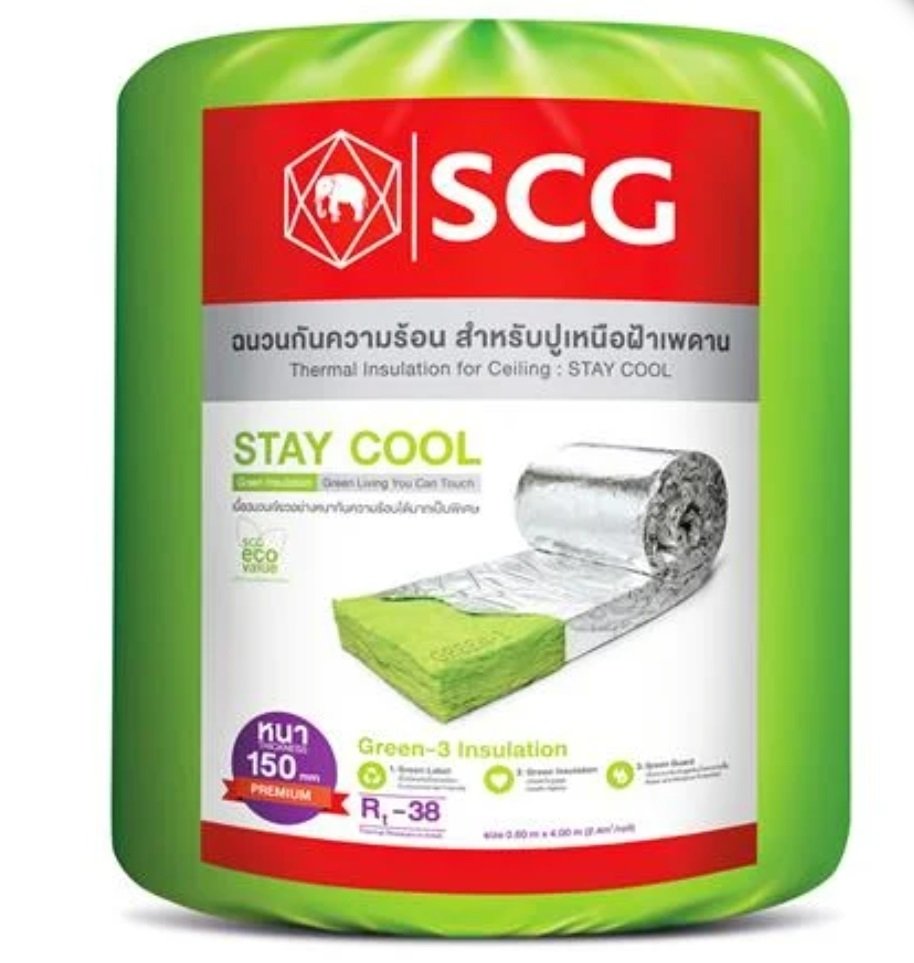

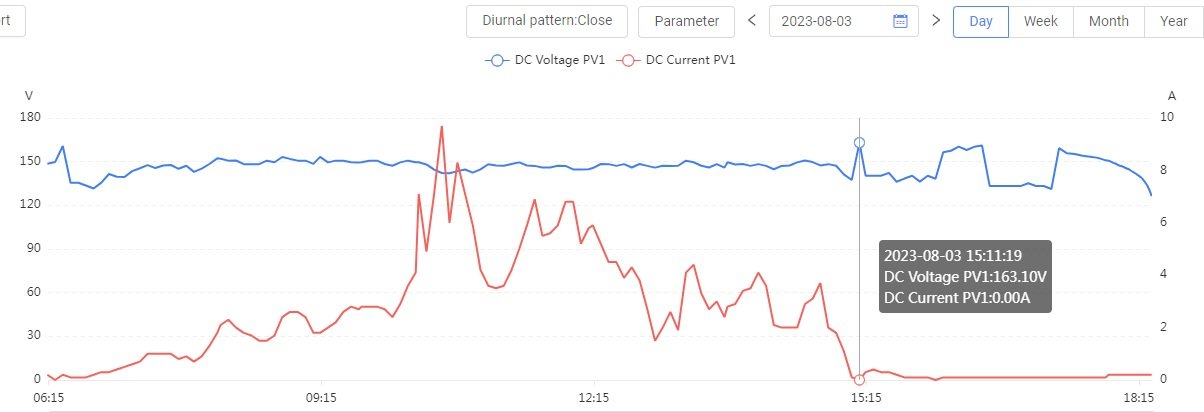


Retirement P2S - Change from 65K/m to 800K in bank
in Thai Visas, Residency, and Work Permits
Posted
Again, many thanks. Its a few years old and there are some conflicting suggestions/recommendations e.g. yes maintain international transfers until next renewal, and no need to maintain the transfers if the 800K is in the bank at the time of the current renewal.
I am mindful that each Immigration Office/Officer sets their own criteria, and that this can change from day to day, depending what side of the bed they got out that morning. That said, I may well take a trip to my Immigration Office (about an hours drive away) and have a chat with the senior there to try and get her ruling on the matter.
As I mentioned in my original post, I was hoping that if I don't need to maintain the 65K monthly international transfers to satisfy Immigrations requirements, and only transfer funds necessary to day-today living, this might help reduce any tax burden should the Revenue Department implement taxing incoming international funds.